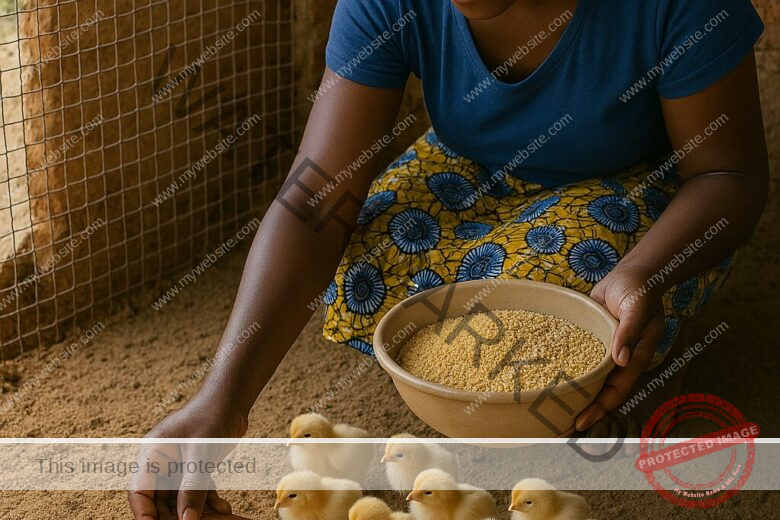Fish farming, also known as aquaculture, has evolved into a significant sector in agriculture, contributing substantially to the economies of all seven continents.
Over the years, the industry has witnessed remarkable growth, supplying a significant portion of the world’s seafood consumption.
You can start a fish farming business by making findings or getting training, planning, obtaining the necessary permits, choosing a farming method, selecting your preferred fish farming sector, and so on.
As a seasoned fish farmer with seven years of expertise in both animal and crop husbandry, I’m excited to guide you through the intricate world of fish farming and offer insights into establishing a thriving fish farming business in the picturesque state of Colorado.
How to Start a Fish Farming Business in Colorado
Colorado is an ideal place to establish your fish farming business because considering its abundant natural resources, favorable climate, and a market eager for locally produced fish.
Colorado provides an ideal environment for aspiring fish farmers. So, in order to help you kick-start your fish farming business in this state, we have compiled all the steps you need to follow below.
Read Also: How to start a Fish Farming Business in California
Step 1: Make Findings or Get Training
As you embark on your fish farming business venture in Colorado, it’s crucial to ensure your efforts are met with success and efficiency.
To achieve this, it is essential that you equip yourself with the necessary knowledge and skills in fish farming.
Take the time to conduct thorough research or consider acquiring training to familiarize yourself with the fundamentals of the industry.
Understanding the ins and outs of fish farming specific to Colorado, you’ll lay a solid foundation for your business and increase your chances of achieving your goals.
Read Also: [Beginner’s Guide] How to Start a Fish Farming in Arkansas
Step 2: Planning
In your journey towards establishing a successful fish farming business in Colorado, meticulous planning becomes a critical component.
Dedicate ample time to carefully strategize and outline the various aspects of your venture. One highly recommended approach is to develop a comprehensive fish farming business plan.
This plan will serve as your roadmap, guiding you through crucial decisions and ensuring the efficient allocation of resources.
By preparing a strong and well-thought-out plan tailored to the unique context of Colorado, you’ll enhance your chances of building a thriving fish farming enterprise.
So, invest your efforts in meticulous planning to set a solid foundation for your business’s future success. Check out this link for fish farming business plan template to serve as a guideline.
Step 3: Obtain Necessary Permit
As you embark on your fish farming business in Colorado, it is imperative to secure the appropriate permits and licenses mandated by local authorities.
Ensuring compliance with regulatory requirements is vital for the smooth operation of your venture.
By obtaining the necessary permits, you demonstrate your commitment to upholding legal standards and operating your fish farm in a sustainable and responsible manner.
Take the time to learn about the specific permits and licenses required in Colorado, and diligently complete the application process.
This step will not only establish your credibility but also contribute to the long-term success of your fish farming business.
Checkout this link for more information about the permit and licenses needed to run a successful fish farming business in Colorado
Read Also: [Beginner’s Guide] How to Start a Fish Farming Business in Alaska
Step 4: Acquire Farming Space or Site
In your pursuit of a flourishing fish farming business in Colorado, selecting the perfect location holds utmost importance.
Seek out sites that offer clean water sources, sufficient water flow, and optimal temperature ranges suited to your desired fish species.
When deciding on a location, take into account essential factors such as proximity to markets, accessibility to transportation infrastructure, and the availability of utilities.
It is important that you carefully evaluate these aspects, you can ensure that your fish farming operation is set up in an ideal space that facilitates both productivity and efficiency.
Secure your farming site wisely to lay the foundation for a thriving fish farming enterprise.
Read Also: [Beginner’s Guide] How to Start a Fish Farming Business in Arizona
Step 5: Choose your Farming Method
As you embark on your fish farming business in Colorado, choosing the most suitable farming method becomes a pivotal decision with far-reaching implications.
Consider various factors such as the specific fish species you plan to cultivate, the available resources at your disposal, prevailing climate conditions, and market demand.
The two common farming methods to explore are indoor and outdoor farming.
Indoor fish farming entails raising fish in controlled environments, often within buildings or enclosed structures. The use of tanks and other enclosed containers is common in indoor farming
Meanwhile, outdoor fish farming involves cultivating fish in natural or human-made bodies of water, such as ponds, lakes, or coastal areas.
Step 6: Select your Preferred Fish Farming Sector
As you establish your fish farming business in Colorado, a significant decision to make is selecting the sector in which you wish to focus your efforts.
Read Also: [Beginner’s Guide] How to Start a Fish Farming Business in Alabama
Consider two common sectors that offer distinct opportunities:
#1. Raising Fingerlings for Sale
One option is to specialize in raising fingerlings, which are young fish typically ranging from a few weeks to a few months old.
This industry encompasses the nurturing of fingerlings until they reach a size appropriate for selling to fellow fish farmers, hatcheries, or individuals looking to populate their personal ponds or tanks.
#2. Raising Fingerlings to Adult Size for Sale
You can choose to rear fingerlings until they reach adulthood, selling them as fully grown fish for various purposes.
Mature fish find applications in direct consumption, stocking commercial fisheries, or supplying live fish markets.
Read Also: [Pdf Sample] Business Plan For Poultry And Fish Farming Docx
Step 7: Procure Farm Equipment
As you progress with your fish farming business in Colorado, obtaining the necessary farm equipment is a crucial step.
The right equipment will help streamline your operations, increase productivity, and ensure optimal conditions for your fish.
Consider the following aspects:
- Fish Tanks or Ponds: Depending on your chosen farming method, acquire suitable fish tanks for indoor farming or prepare well-designed ponds for outdoor farming. Ensure they provide ample space and meet the specific requirements of your fish species.
- Water Circulation and Filtration Systems: Invest in efficient water circulation and filtration systems to maintain water quality and provide a healthy environment for your fish. These systems help regulate oxygen levels, remove waste, and prevent disease outbreaks.
- Feeding and Monitoring Equipment: Procure feeding systems and monitoring equipment to efficiently distribute feed and monitor essential parameters like water temperature, pH levels, and oxygen levels. This will aid in maintaining optimal fish health and growth.
- Harvesting and Processing Tools: Prepare the necessary tools for fish harvesting, such as nets, traps, or grading equipment. If you plan to process your fish, consider equipment like fish cleaning stations, processing tables, and packaging materials.
- Safety and Maintenance Tools: Ensure you have safety equipment, such as life jackets, first aid kits, and fire extinguishers. Additionally, have maintenance tools to handle repairs, cleaning, and general upkeep of your equipment and facilities.
Step 8: Construct and Prepare Fish Housing
As you progress with your fish farming business in Colorado, it becomes crucial to build suitable fish housing that provides an optimal environment for your fish to thrive.
The selection of housing is influenced by variables like the specific fish species, the chosen farming technique, and the resources at your disposal.
Read Also: [Beginners Guide] How to Start Fish Farming on Small Scale
Consider the following common housing options for fish farming:
- Ponds: Constructing ponds is a widely adopted approach, particularly suitable for fish species like trout and salmon. Excavate the land, create a basin, and line it with materials such as clay, plastic liners, or geotextile membranes to prevent water leakage. Design the ponds with appropriate depth, size, and water flow to accommodate the specific needs of your fish species and maintain optimal water quality.
- Tanks: Tanks are popular choices for indoor fish farming or areas with limited land availability. You can make use of materials like concrete or fiberglass to construct tanks and raceways. Tanks provide controlled conditions for fish rearing and are suitable for species like tilapia and catfish. Raceways are elongated channels that allow water flow and are commonly used for salmonids.
- Recirculating Aquaculture Systems (RAS): RAS involve circulating and filtering water within a closed system, reducing water consumption and environmental impacts. Typically utilizing tanks, biofilters, and other components, RAS maintains water quality and provides a controlled environment for fish. This approach is applicable to a range of species, encompassing both freshwater and marine fish. It’s commonly utilized within indoor or land-based facilities.
- Cage Systems: Cage systems are employed in open-water areas, such as lakes, rivers, or coastal regions. These systems consist of netting or mesh enclosures suspended in the water, creating a controlled environment for fish while utilizing natural water resources. Cage farming is commonly practiced for species like salmon and trout. Ensure you consider water quality, currents, and site security when utilizing cage systems.
- Floating Rafts and Pens: Floating rafts or pens are commonly used for shellfish farming, such as oysters and mussels. These constructions comprise of buoyant platforms or racks that provide a surface for the shellfish to develop on. Deploy them in sheltered coastal areas or estuaries, where the shellfish can access nutrients naturally and be suspended in the water column.
Step 9: Purchase and Stocking of Fishes
As you proceed with your fish farming business in Colorado, it’s crucial to source healthy fingerlings or juveniles from reputable suppliers.
Obtain fingerlings or juveniles from trusted suppliers known for their quality stock. Select fish that are free from diseases and exhibit robust growth. This will lay a strong foundation for your fish farm’s success.
Also, follow recommended stocking densities based on the specific requirements of your fish species and the capacity of your fish housing.
Maintaining appropriate stocking densities promotes healthy growth and minimizes stress among the fish.
Step 10: Fish Farm Management
It is important that you manage and maintain your farm properly to avoid losing your fishes.
Make sure you provide suitable feed to your fish. Offer a well-formulated feed specifically designed for your fish species.
Ensure the feed meets the nutritional requirements of the fish and promotes their growth and overall health.
Also, implement feeding regime and water quality monitoring by establishing a proper feeding regime, ensuring regular and balanced feeding.
Monitor water quality parameters such as temperature, oxygen levels, pH, and ammonia concentrations to maintain optimal conditions for your fish.
Disease prevention measures should also be put in place by implementing disease prevention protocols, including vaccination and quarantine procedures.
These measures safeguard your fish population from potential diseases and minimize the risk of outbreaks.
Implement fish health management by employing fish health management practices, such as regular health checks, disease surveillance, and appropriate treatments when necessary.
Prioritize the well-being of your fish to maximize their growth potential and minimize health-related issues.
Step 11: Marketing and Sales
This is the stage where you harvest and prepare your fishes for marketing sales. Ensure that the fishes are sorted by sizes and prepared for customers to buy.
You can sell your fishes in different places including local markets, fish markets, restaurants and hotels, online sales, and any other available avenue.
Requirements of Fish Farming
Fish farming entails cultivating aquatic organisms under controlled conditions. To establish a successful fish farm, it’s crucial to understand the fundamental requirements:
Water Requirements
Fish thrive in clean and well-oxygenated water. Adequate water supply and quality are vital to their growth and health.
Temperature Requirements
Different fish species have varying temperature preferences. It’s essential to maintain the right water temperature for the species you intend to cultivate.
Housing Requirements
Fish housing, often referred to as fish houses or ponds, should be designed to mimic natural aquatic environments. Proper aeration and filtration systems are essential.
Feed Requirements
Fish need balanced and nutritious diets for optimal growth. High-quality fish feed with the right protein and nutrient content is essential.
Watering and Sunlight
Regular water changes and exposure to natural sunlight play a crucial role in promoting fish health and growth.
Trend and Statistics of Fish Farming Worldwide
Fish farming has become a global phenomenon, providing a sustainable solution to the growing demand for seafood.
This sector contributes to the GDP of various continents, driving economic growth and employment opportunities.
According to the latest statistics, Asia leads in fish production, followed by Europe, North America, Africa, South America, Oceania, and Antarctica.
The rising popularity of fish farming can be attributed to its potential for high yields, efficient land use, and reduced pressure on wild fish populations.
Essential Tools and Inputs for Fish Farming
Successful fish farming requires various tools and inputs, including aeration systems, water testing kits, fish feed, netting, and harvesting equipment. Investing in high-quality tools enhances production efficiency and fish health.
Benefits of Starting Fish Farming Business in Colorado
Engaging in fish farming offers numerous benefits, including:
- Sustainable Food Production: Contributing to the production of sustainable seafood.
- Economic Growth: Boosting local economies and creating jobs.
- Resource Conservation: Reducing pressure on wild fish populations.
- Food Security: Enhancing local food supply and security.
Is Fish Farming Business Profitable
Yes, fish farming can be a profitable business venture. However, profitability depends on various factors, such as market demand, production costs, operational efficiency, and effective marketing strategies.
Conducting thorough market research, selecting the right fish species, optimizing production techniques, and implementing sound business practices are essential for maximizing profitability in the fish farming industry.
Challenges Faced when Starting Fish Farming Business in Colorado
While fish farming offers substantial benefits, challenges include disease outbreaks, water quality management, regulatory compliance, and market volatility. Addressing these challenges requires vigilance and proactive management.
Fish Yield per Acre
Fish yield per acre depends on factors such as species, water quality, feeding practices, and management techniques. On average, a well-managed fish farm can yield several thousand pounds of fish per acre annually.
Top Suppliers of Fingerlings or Juvenile Fishes in Colorado
In Colorado, several reputable suppliers offer high-quality fingerlings and juvenile fish. These suppliers play a pivotal role in ensuring the success of your fish farming venture. Some notable suppliers include [Supplier Names and Websites].
Factors to Consider when Starting Fish Farming Business in Colorado
- Species Selection: Choose fish species that are well-suited to Colorado’s climate and market demand. Consider factors such as temperature tolerance, water quality requirements, growth rates, and market preferences when selecting the species for your farm.
- Farming Method: Evaluate different farming methods, such as pond farming, tank systems, or cage systems, based on your resources, available space, and target species. Select a method that aligns with your business goals and ensures optimal conditions for fish growth.
- Market Research: Conduct thorough market research to understand the demand, competition, pricing, and consumer preferences for fish products in Colorado. Identify your target market segments and develop a marketing strategy tailored to their needs.
- Financial Planning: Develop a comprehensive business plan that includes financial projections, operating costs, and potential revenue streams. Consider expenses related to infrastructure, equipment, feed, labor, marketing, and regulatory compliance.
Cost of Starting Fish Farming Business in Colorado
The cost of starting a fish farming business in Colorado can vary depending on several factors, including the scale of operation, chosen farming method, infrastructure requirements, and species selection.
Key expenses may include land or facility acquisition, construction or modification of fish housing, purchasing equipment (such as tanks, filters, aerators), sourcing fingerlings or juveniles, acquiring feed, obtaining necessary permits and licenses, marketing efforts, and initial working capital.
A detailed financial analysis and business plan can help estimate the specific costs associated with your fish farming venture.
Howbeit, on the average it will require you minimum of $50000 to start fish farming business in Colorado.
Potential Return on Investment in Fish Farming
The return on investment (ROI) in fish farming can be substantial, particularly when proper management practices are employed.
The ROI varies based on factors such as species, market demand, and production efficiency.
Risk Assessment in Fish Farming Business
Like any business venture, fish farming carries inherent risks, including disease outbreaks, adverse weather conditions, and market fluctuations.
Perform a comprehensive evaluation of potential risks and formulate contingency strategies to effectively address these potential difficulties.
Profitability of Fish Farming Venture
Fish farming has the potential to be highly profitable, especially with efficient management and a strong market demand for fresh and locally sourced seafood.
Guide to Starting a Small-Scale Fish Farming Business
Starting a small-scale fish farming business, whether in your backyard or a limited space, involves similar principles to larger operations. Follow these steps:
- Choose Suitable Fish Species: Opt for fish species that thrive in confined spaces.
- Set Up Tanks or Ponds: Prepare tanks or ponds with proper aeration and filtration systems.
- Feeding and Maintenance: Implement a feeding schedule and regular maintenance routine.
- Monitoring and Health Management: Keep a close watch on fish health and address any issues promptly.
- Harvesting and Marketing: Harvest fish at the right size and market them to local consumers.
Guide to Starting Commercial-Scale Fish Farming
Scaling up to a commercial fish farming operation requires careful planning:
- Business Scaling Plan: Develop a comprehensive plan for expansion, considering infrastructure, labor, and production targets.
- Streamlined Operations: Implement efficient processes to manage larger fish populations.
- Market Expansion: Explore broader distribution channels to reach wider markets.
- Quality Control: Maintain consistent product quality as production scales up.
Top 10 Tips for Success in Fish Farming Business
- Educate Yourself: Continuously learn about new techniques and technologies.
- Species Selection: Choose species aligned with your expertise and market demand.
- Water Quality: Prioritize maintaining optimal water quality and conditions.
- Health Management: Implement disease prevention measures and respond promptly to issues.
- Efficient Feeding: Develop a balanced feeding regimen to promote growth.
- Market Research: Stay updated on consumer preferences and market trends.
- Networking: Connect with other fish farmers and industry experts for insights.
- Financial Management: Monitor expenses and revenues to ensure profitability.
- Regulatory Compliance: Adhere to local regulations and industry standards.
- Continuous Improvement: Regularly evaluate and adjust your practices for better outcomes.
Ideal Areas in Colorado for Fish Farming
Colorado offers several regions conducive to fish farming due to its clean water sources, suitable climate, and picturesque landscapes.
Areas near major cities like Denver, Boulder, and Colorado Springs provide easy access to markets.
Industries Utilizing Fish Farming Products
The products of fish farming, including fresh and processed fish, find applications in various industries such as restaurants, grocery stores, and seafood markets.
The versatility of fish products makes them a valuable commodity in the culinary world.
Top Countries with Import and Export Statistics
Several countries are major players in the global fish farming industry. China, Norway, and the United States lead in both production and export of aquaculture products.
Optimizing Fish Farming for Maximum Production
To maximize fish production, consider factors such as water quality management, proper feeding practices, disease prevention, and efficient breeding techniques.
Common Fish Farming Diseases and Pests
Fish farming can be susceptible to diseases and pests that can impact fish health and production. Regular monitoring, disease prevention strategies, and prompt action are vital for mitigating these risks.
Fish Selling and Marketing Strategies
Develop a strong marketing strategy to promote your fish products. Utilize both online and offline channels to reach consumers, such as farmers’ markets, local grocery stores, and online platforms.
Fish Cleaning and Maintenance Schedule
Regular fish cleaning and maintenance are essential to maintain optimal water quality and prevent disease outbreaks.
Develop a cleaning schedule to ensure fish health and overall production efficiency.
Where to Source Quality Fish Species and Varieties
Reputable hatcheries and suppliers offer a wide range of fish species and varieties suitable for aquaculture.
Conduct thorough research and choose suppliers with a track record of providing healthy and genetically robust fish.
How to Start Fish Farming at Home
Starting a small-scale fish farming venture at home involves setting up a well-designed system, selecting suitable fish species, providing proper care, and following best practices for feeding and maintenance.
How much do Fish Farmers make a Year
The income potential for fish farmers in Colorado varies based on factors such as species, market demand, production volume, and operational efficiency. Well-managed fish farms can generate a substantial income over time.
Fish Farming Business Plan
Several resources, including online templates and guides, can help you develop a comprehensive fish farming business plan tailored to your specific goals and market conditions.
Fish Farming Business for Sale
If you’re interested in acquiring an existing fish farming business, explore opportunities that align with your expertise and goals. Evaluate the business’s financials, infrastructure, and market potential before making a decision.
In-depth Guide on How to Start Fish Farming
This article provides an in-depth guide to starting a fish farming business in Colorado, encompassing every aspect of the venture from planning and setup to management and marketing.
Conclusion
Embarking on a fish farming journey in Colorado offers a promising avenue for both agricultural enthusiasts and entrepreneurs. As you navigate the complexities of fish farming, remember that careful planning, diligent research, and a passion for sustainable agriculture are the keys to your success. By embracing the challenges and benefits of fish farming, you can contribute to the growth of a thriving industry while reaping the rewards of a profitable and fulfilling venture.





2 Replies to “How to start a Fish Farming Business in Colorado”